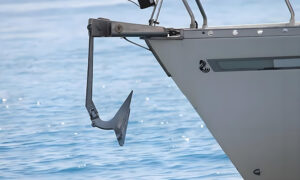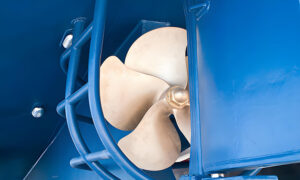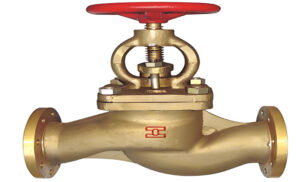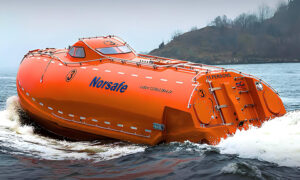Marine ropes are vital for safe and efficient maritime operations. Nylon ropes offer shock absorption and UV resistance, while polyester ropes provide strength and minimal stretch. Choosing the right rope involves considering factors like material, diameter, and strength. Proper handling, knot tying, and regular maintenance ensure longevity and performance. With attention to detail and adherence to guidelines, boat ropes withstand the challenges of the sea. They are indispensable tools for docking, mooring, anchoring, towing, and rigging, providing reliability and strength in marine environments.
How To Choose A Marine Rope
Choosing the right marine rope for different applications involves considering the specific requirements and demands of each use case. Here are some common marine applications and factors to consider when selecting a rope for each:
Docking and Mooring
Docking and mooring rope play a crucial role in safely securing a vessel to a dock or other fixed structures. They must withstand various forces, such as wind, currents, and wave action, while providing stability and preventing excessive movement. Here are some factors to consider when choosing docking and mooring ropes:
- Material: Nylon is a popular choice for docking and mooring ropes due to its excellent shock absorption properties. It can stretch to absorb sudden forces and reduce stress on the vessel and dock. Nylon ropes also have good resistance to UV degradation, which is essential for prolonged exposure to sunlight.
- Diameter and Strength: The diameter and strength of the rope should be selected based on the size and weight of your vessel, as well as the expected loads. Consult GOSEA MARINE to ensure the rope has sufficient strength to handle the anticipated forces.
- Length: Ensure the mooring rope is long enough to reach from the boat to the dock or mooring point with sufficient slack for tides and waves.
- UV Resistance: Look for ropes with good UV resistance to withstand prolonged exposure to sunlight.
Anchoring
An anchor rope, also known as an anchor line or anchor rode, is a vital component of any vessel’s anchoring system. It is responsible for connecting the anchor to the vessel and plays a critical role in ensuring the vessel remains secure in place. Here are some important aspects to consider when choosing an anchor rope:
- Material: The most commonly used materials for anchor ropes are nylon and polyester. Nylon ropes are known for their elasticity and shock-absorbing properties, which help to reduce sudden jerks and strain on the anchor and vessel. They are ideal for anchoring in areas with strong currents or changing weather conditions. Polyester ropes, on the other hand, offer low stretch and high strength, making them suitable for anchoring in areas where minimal movement is desired.
- Length: The length of the anchor rope is essential for proper anchoring. The recommended length is typically calculated using the “5:1 rule,” which suggests using five times the water depth as the length of the anchor rope. This ensures a sufficient scope, allowing the anchor to hold securely and reduce the risk of dragging. Consider the maximum water depth in your typical anchoring locations when determining the length of the rope needed.
- Markings: Some anchor ropes have markings or colored sections at specific intervals to help gauge the amount of rope deployed and maintain consistent anchoring setups. These markings can be useful for estimating the scope and ensuring proper anchoring practices.
- Eye Loops and Thimbles: Many anchor ropes come with pre-spliced eye loops or thimbles at one or both ends. These loops provide convenient attachment points for connecting the rope to the anchor and the vessel’s bow cleat or anchor windlass. Thimbles help protect the rope from wear and chafing at the connection points.
Towing
A tow rope is a specialized rope used for towing or being towed by another vessel. It is designed to withstand the stresses and strains associated with towing operations. Here are some important considerations when choosing a tow rope:
- Material: Tow ropes are typically made from synthetic fibers such as nylon, polyester, or polypropylene. Nylon ropes offer excellent elasticity and shock absorption, making them suitable for towing applications where sudden jerks or dynamic loads may occur. Polyester ropes provide high strength and low stretch, making them ideal for towing operations that require stability and control. Polypropylene ropes are lightweight and float on water, making them useful for specific towing scenarios.
- Length: The length of the tow rope should be appropriate for the intended towing distance and the size of the vessels involved. It is essential to ensure that the tow rope is long enough to maintain a safe distance between the vessels while allowing for maneuvering. Longer tow ropes provide greater flexibility during towing operations.
- Construction: Tow ropes are typically available in braided or twisted constructions. Braided ropes offer higher strength, durability, and resistance to abrasion compared to twisted ropes. They are less likely to unravel and tangle during towing operations. However, twisted ropes may be more affordable and suitable for lighter-duty towing applications.
Sailing and Rigging
Sailing ropes and rigging ropes are essential components of a sailboat’s rigging system. They serve different purposes and have specific characteristics tailored to their respective applications. Here’s a more detailed overview of sailing ropes and rigging ropes:
Material:Sailing ropes and rigging ropes are maily made from synthetic fibers Synthetic fibers are commonly used in modern sailing ropes due to their strength, durability, and performance characteristics. Some popular synthetic fibers used in sailing ropes include polyester, nylon, Dyneema (also known as Spectra), and Technora.
Length:The length of sailing ropes and rigging ropes depends on various factors, including the specific application, boat size, and rigging setup. Here are some considerations for determining the appropriate length:
- Halyards and Sheets: The length of halyards and sheets should be sufficient to reach the necessary attachment points on the sail and the respective winches or cleats on the boat. It’s important to consider the height of the mast, boom, or other relevant components to ensure proper functionality and ease of handling.
- Control Lines: Control lines, such as reefing lines or cunningham lines, should be long enough to allow for proper adjustments and ease of operation. Consider the necessary travel distance and the number of attachment points involved in the specific control function.
- Rigging Ropes: The length of rigging ropes, such as shrouds, stays, or lifelines, is determined by the design and configuration of the boat’s rigging system. These ropes should be appropriately sized to reach the necessary attachment points on the mast, bow, or stern, while maintaining proper tension and support.
Rescue and Safety
Marine rescue ropes are critical tools used in water-based emergency situations to aid in the rescue and retrieval of individuals in distress. These specialized ropes are designed to provide support, security, and reliability during water rescues and are crucial tools for saving lives in marine environments. Here’s an overview of rescue ropes as marine rescue products:
Length and Diameter: Marine rescue ropes are available in various lengths and diameters, depending on their intended use and specific requirements. The length of the rope is determined by factors such as the distance between the rescuer and the victim, the type of water environment, and the rescue technique being employed. Longer ropes allow for greater reach, while shorter ropes provide more control and maneuverability. The diameter of the rope depends on the required strength and handling characteristics. Thicker ropes generally offer higher strength and durability, while thinner ropes are more lightweight and easier to handle.
Knotability and Splicing: Marine rescue ropes should be easily knotable and splicable to allow for secure attachments and customized configurations. Rescuers need the flexibility to tie knots that provide reliable connections and adjust the length or create loops as needed. Splicing, which involves weaving the rope’s fibers together, creates a strong and smooth connection without the bulkiness of knots and is commonly used in marine rescue ropes to maintain their strength and integrity.
Visibility and Reflective Elements: Visibility is crucial in water rescue operations, especially in low-light or adverse weather conditions. Many marine rescue ropes feature high-visibility colors such as bright yellow, orange, or red, which enhance their visibility against the water’s surface. Some ropes may also incorporate reflective elements or strips to improve visibility, making it easier for rescuers to locate and track the rope during rescue operations.
Certification and Compliance: Marine rescue ropes should adhere to recognized industry standards and certifications to ensure their quality, performance, and suitability for water rescue applications. Certifications such as SOLAS (Safety of Life at Sea) or USCG (United States Coast Guard) approvals indicate that the ropes have been tested and meet specific requirements for strength, buoyancy, and performance in marine environments.
How to use a marine rope
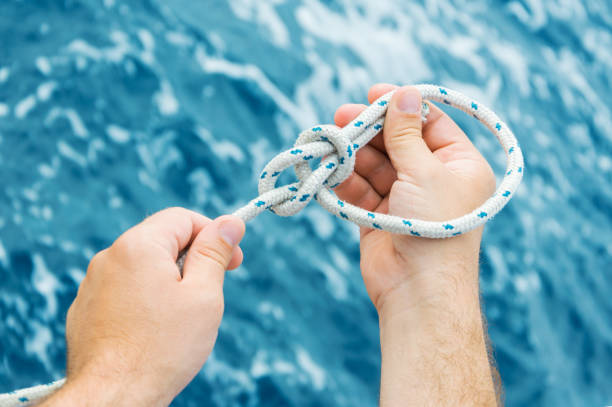
After choosing the suitable marine rope for your ship, using ship rope properly is the next question. The proper using of ship ropes ensure your safety when you are in marine operation, here are some general guidelines on how to use a ship rope:
- Inspect the Rope: Before use, inspect the rope for any signs of wear, fraying, or damage. Check for weak spots, knots, or splices that may compromise its strength. If you notice any issues, replace the rope with a new one.
- Choose the Right Knot: Select an appropriate knot for the specific application. Common knots used in marine settings include the cleat hitch, bowline, figure-eight knot, and clove hitch. Ensure the knot is tied securely to prevent slippage.
- Handling the Rope: When handling the ship rope, be mindful of your hands and fingers. Avoid allowing the rope to run through your hands quickly, as it can cause burns or injury. Use gloves when necessary to protect your hands and improve grip.
- Securing the Rope: When securing the rope to a cleat, bollard, or other attachment point, wrap the rope around the object several times to distribute the load evenly. Finish with a locking hitch or appropriate knot to secure the rope in place.
- Applying Tension: Slowly apply tension to the rope to avoid sudden jerks or shocks. This is particularly important when towing or mooring to prevent damage to the boat or equipment.
- Monitoring and Adjusting: Regularly monitor the tension and condition of the rope during use. Make adjustments as needed to maintain proper tension and prevent slippage or failure.
- Storing the Rope: After use, properly coil and store the rope in a dry and well-ventilated area. Avoid storing the rope in direct sunlight or in contact with chemicals or sharp objects that could damage it.
How To Maintain Marine Ropes
Proper maintenance of boat ropes is crucial for their longevity, performance, and safety. Here are some guidelines for maintaining a boat rope:
- Regular Inspection: Inspect the rope before and after each use. Look for signs of wear, fraying, or damage such as broken fibers, cuts, or abrasions. Pay attention to areas where the rope comes into contact with hardware or surfaces that may cause chafing or abrasion.
- Cleaning: Clean the rope periodically to remove dirt, salt, or other contaminants. Use a mild soap or rope cleaner and lukewarm water. Gently scrub the rope with a soft brush or cloth. Rinse thoroughly to remove all soap residue. Avoid using harsh chemicals or bleach, as they may damage the rope fibers.
- Drying: After cleaning or exposure to water, ensure the rope is properly dried before storage. Hang it in a well-ventilated area away from direct sunlight. Avoid storing wet or damp ropes, as it can lead to mold, mildew, or rot.
- Storage: Coil the rope neatly and store it in a cool, dry, and well-ventilated location. Protect it from exposure to sunlight, extreme temperatures, chemicals, and sharp objects that may damage the fibers. Avoid storing ropes in areas where they can become tangled or subjected to unnecessary strain.
- Avoid Knots and Kinks: Avoid leaving the rope with knots or kinks for extended periods, as this can weaken the fibers and reduce its strength. Untie any knots and straighten out any kinks before storage.
- Lubrication: Consider applying a suitable boat rope lubricant or conditioner to enhance the rope’s flexibility and reduce friction. Follow the manufacturer’s instructions when using lubricants, as certain types may be better suited for specific rope materials.
- Rotate and Replace: Rotate the use of ropes to distribute the wear evenly. If you notice signs of significant wear, damage, or reduced strength during inspections, it’s important to replace the rope promptly to ensure safe and reliable operation.
Conclusion
When it comes to finding the perfect marine ropes for sale, GOSEAMARINE is your trusted partner. With an extensive selection of high-quality ship ropes, including mooring ropes, they offer a wide range of options to suit your specific needs. Their knowledgeable team is always ready to provide expert advice and guide you towards the right choice.

